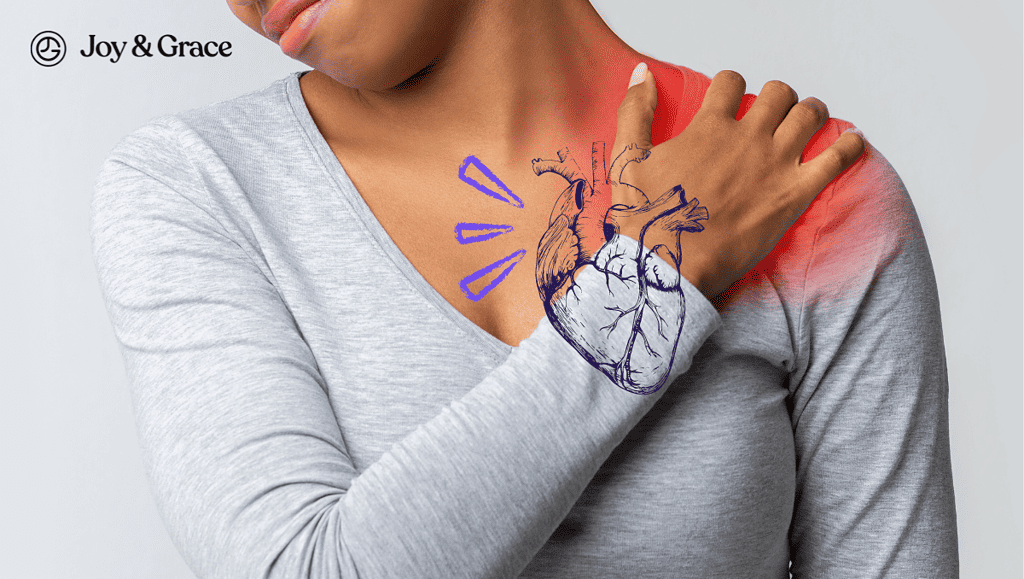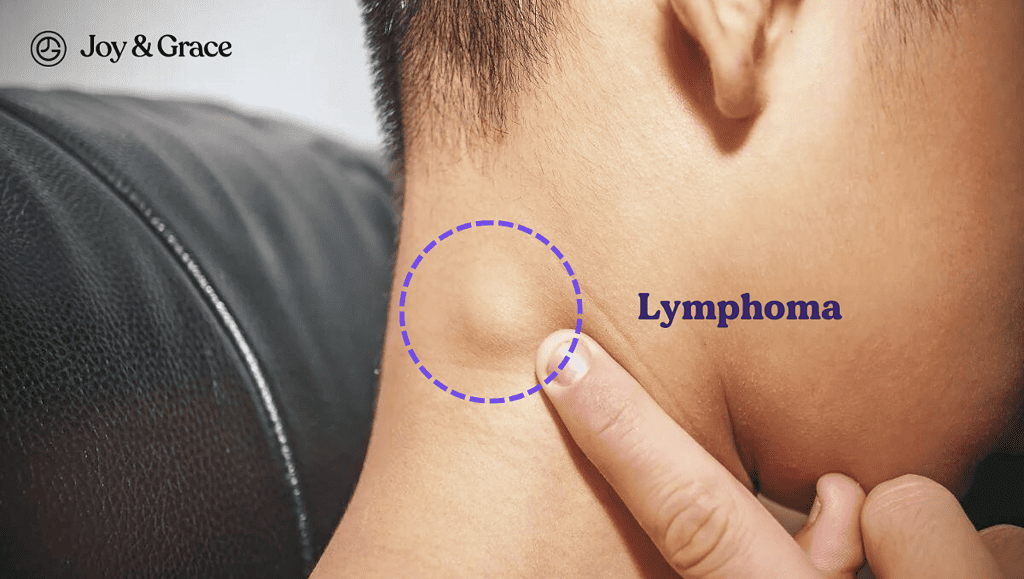Ever found yourself rubbing your left shoulder, trying to understand why it was suddenly hurting? Could the pain possibly be heart-related? At Joy&Grace, we believe it is vital that every person is able to recognize the signs of heart problems.
This article aims to answer all your questions about the connection between your left shoulder pain and your heart. So, shoulder to the wheel, let us dive right into the topic!
Can Heart Problems Cause Left Shoulder Pain?
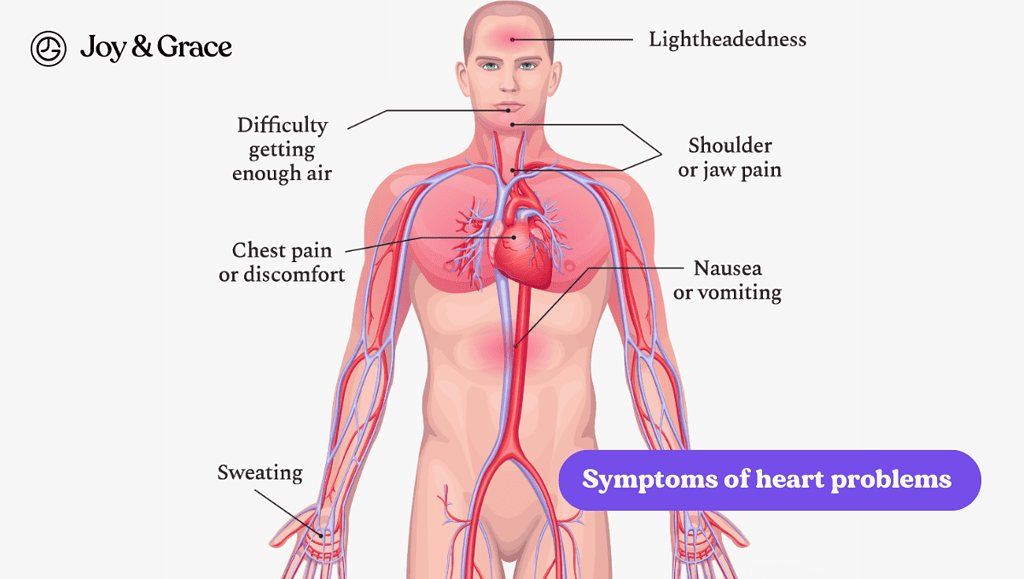
Yes. Pain in the left shoulder and arm is common in heart diseases such as heart attacks. This is due to the connection of nerves within the body. However, heart problems don’t typically present with shoulder pain as their only symptom.
Usually, heart problems present with many symptoms, such as the following:
- Chest discomfort,
- Shortness of breath on exertion,
- Pain that radiates to the jaw, neck, shoulders, and arms
- Sweating (commonly described as "cold sweat")
- A feeling of “impending doom”
- Rapid or irregular heartbeat, etc.
One exception to this rule is among people with diabetes, older individuals, or those with certain neuropathies.
In these cases, heart attacks, for example, might manifest in atypical ways, with sole shoulder pain being a potential symptom. If you belong to any of these groups and experience unexplained shoulder pain, seeking medical attention remains crucial for proper evaluation and care.
To get into more detail, since we mentioned heart attacks:
When a heart attack occurs, one or more parts of the heart do not get the blood supply they need. As a result, special heart receptors are activated. They transmit the danger signals to the heart's nerves. Because of the shared nerve network, the pain signal goes to other nearby areas. One of these areas is the left shoulder area. This type of transmitted pain is called referred pain. It represents the mechanism behind heart-related shoulder pain.
Left shoulder pain may also come as a result of pericarditis. This disease affects the so-called “sac” of the heart. Let us get into more detail, step-by-step.
Does Left Shoulder Pain Always Mean Heart Attack?
No, just because you have left shoulder pain does not always mean you are going through a heart attack. As we mentioned earlier, heart attacks do not typically present with shoulder pain as their primary symptom.
Shoulder pain (left or right) is a common problem worldwide. It can appear for different reasons. Some of the causes are mild. Others are more serious and severe.

Here are some of the most common causes of left shoulder pain:
- Arthritis in the shoulder joint
- Bone spurs (abnormal growths) in the shoulder area
- Bursitis (inflammation of the protective bursa)
- Broken shoulder bone
- Shoulder dislocation
- Frozen shoulder (stiff and painful shoulder)
- Overuse injuries
- Nerve injuries
- Tears of the rotator cuff tendons
- Liver and gallbladder disease
- Poor shoulder posture
Sometimes, shoulder pain may be due to a problem in another area of the body, such as the neck or lungs. There is usually pain at rest and no worsening of pain when moving the shoulder.
How Do I Know if Shoulder Pain is Heart-Related?

Sudden and unexplained shoulder pain can be alarming. How can you tell if it is a sign of heart disease? To recognize left shoulder pain from heart disease, you should learn what it feels like and where it is located. Then, when you read about the typical signs of heart disease, you can make sense of the bigger picture.
Where is Heart Shoulder Pain Located?
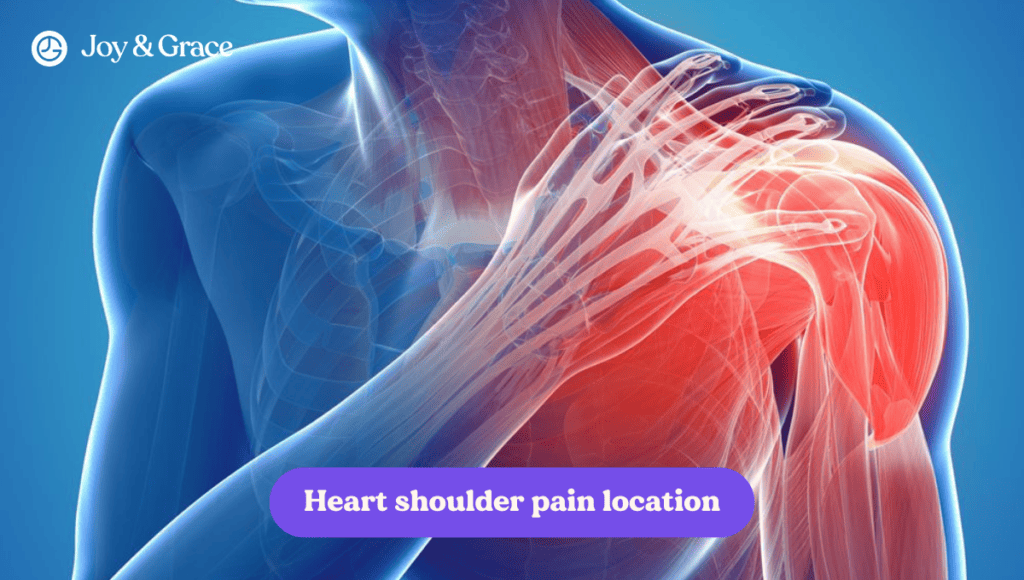
Heart-related shoulder pain is referred pain from the chest. It is located at the top and front of the shoulder. It may feel like increased pressure or discomfort.
Both the left and right shoulder may be affected. According to a study, about 51% of all patients reported chest pain radiating to the left shoulder and arm. 28% reported right shoulder and arm pain. Women complained of right shoulder involvement more often than men.
The pain may also involve other parts close to the shoulder. In men, the pain may go toward the chin and the arm. In women, chest and shoulder pain may spread to the jaw, neck, and back (between the shoulder blades).
Recognizing Heart Disease Symptoms
When it comes to heart issues, one of the most common complaints is ischemia. Heart ischemia means there is a lack of oxygen-rich blood in the heart muscle. Ischemia most commonly happens when any of the coronary (heart) arteries (or their branches) get blocked.
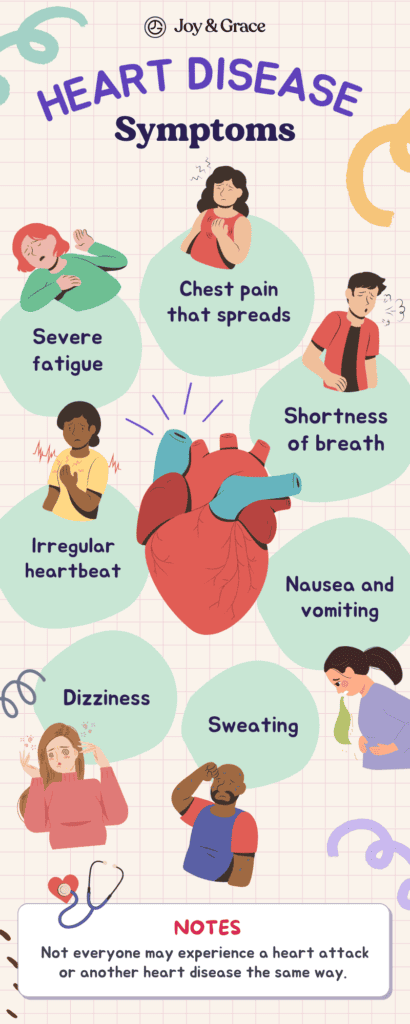
As a result of ischemia, heart tissues may suffer, and a heart attack may follow. Some of the most common signs of ischemic heart disease and heart attack include the following:
Chest pain that spreads
The most common symptom of a heart attack is chest pain/discomfort. The pain starts in the middle of the chest. It feels like something is putting pressure on your chest and squeezing it. It may appear suddenly and become more intense.
Chest pain spreads or radiates outward to areas like the shoulder. Consequently, shoulder pain appears. Chest pain may also spread to the following:
- Left arm,
- Neck,
- Jaw, or
- Back, between the shoulder blades.
Chest pain from heart disease usually gets worse with physical activity.
Shortness of breath
Breathlessness appears as the heart loads the lungs with more work to provide more and more much-needed oxygen.
Nausea and vomiting
When the heart is damaged, certain autonomic receptors are activated and start firing impulses. The impulses are carried to the vomiting center, causing nausea and vomiting.
Sweating
Cold sweating may appear as the body tries to remove fluids from the body. This measure is an attempt not to overload the weakened heart.
Dizziness
The heart loses some or most of its ability to pump blood to other organs, including the brain. This leads to poor blood flow and less brain blood supply. Consequently, dizziness may appear.
Irregular heartbeat (Palpitations)
These are felt as fluttering feelings in the chest. They are characteristic of
Severe fatigue
It goes without saying that you feel much more tired after the heart becomes weaker. Less blood pumped means less energy and power.
Not everyone may experience a heart attack or another heart disease the same way. Sometimes, one or more of the symptoms may be completely absent. In other cases, they are more pronounced.
“Silent” heart ischemia is a lack of oxygen to the heart, which has no apparent heart attack symptoms. So, you might suddenly suffer from the consequences of heart ischemia, but no signs are there to show it. Silent heart attacks account for 45% of all heart attacks. They more commonly affect men than women. You may be at a higher risk of experiencing a silent heart attack if you:
- Suffer from diabetes,
- Are old and undergo a surgical operation,
- Are hospitalized in the intensive care unit (ICU),
- Suffer from obstructive sleep apnea, a medical condition in which your breathing stops and restarts while sleeping.
These are just a few more reasons why you should address any concerns about your health with your doctor.
Pericarditis as a Cause of Left Shoulder Pain
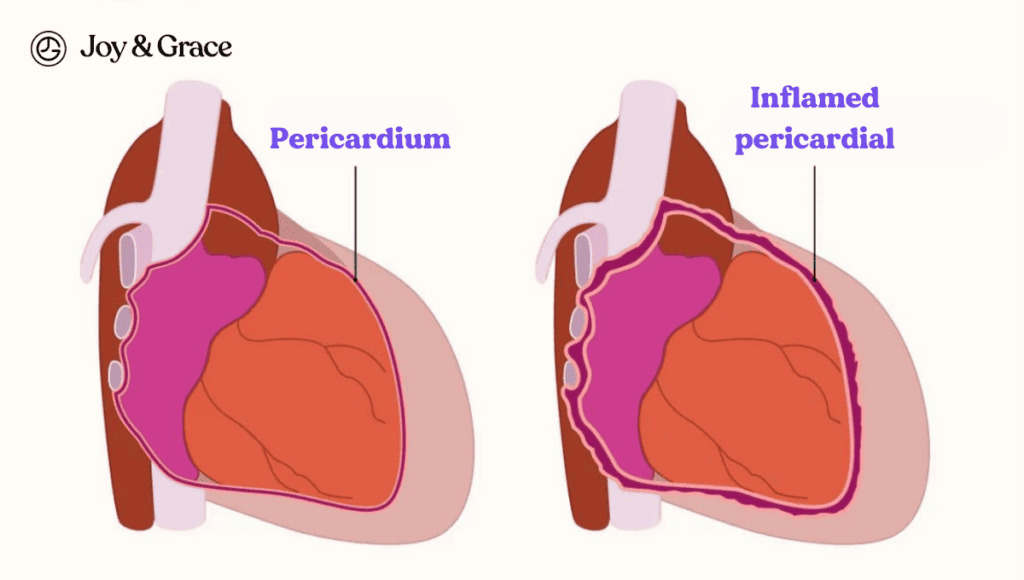
Pericarditis is inflammation of the pericardial layer, or sac, of the heart. It may be acute or chronic. When it is acute, pericarditis causes the following symptoms:
- A sharp, stabbing, and sudden chest pain that spreads. The pain starts at the middle or left side of the chest and refers to the shoulders. Sitting up and leaning forward tends to ease the pain. Lying down and breathing worsens it.
- Fever
- Difficulty breathing
- Coughing
- Palpitations
Chronic pericarditis often causes tiredness, coughing, and shortness of breath.
Because acute pericarditis can present similarly to a heart attack, it should be considered a medical emergency and treated as such. Hint: Call 911!
Does Left Shoulder and Arm Pain Mean a Heart Attack in Women?
Studies have shown that the typical signs and symptoms of heart disease we are familiar with might differ between sexes. The predominant heart disease symptom in both men and women is chest pain or discomfort. Interestingly, women are less likely to attribute their first symptoms to heart disease than men.
Let us see what the main signs of female heart ischemia are.
What Are the Signs of Female Heart Attack?
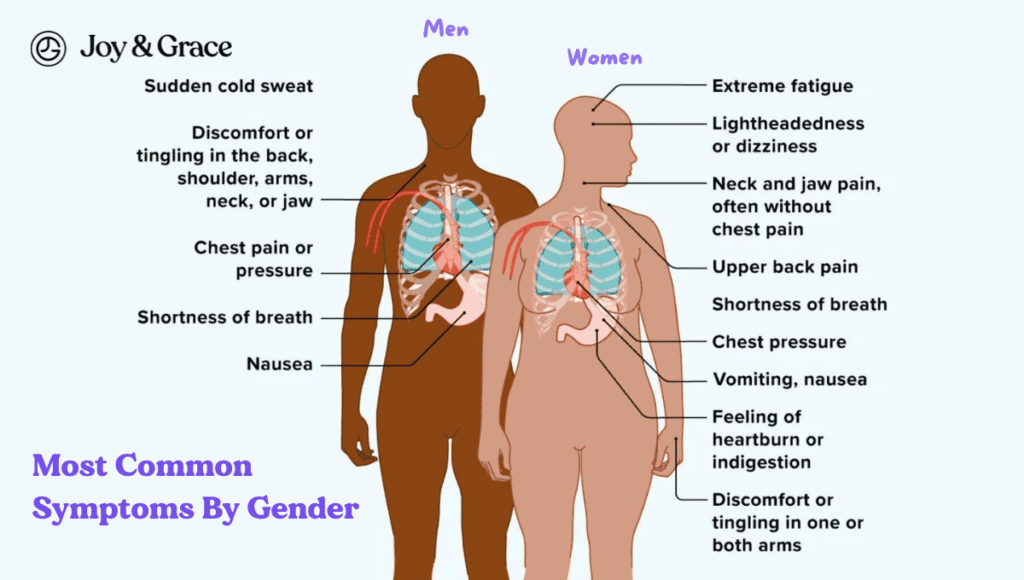
A review of 27 studies found that women with heart ischemia complained more often of the following symptoms:
- Pain between the shoulder blades,
- Arm, neck, or jaw pain,
- Nausea or vomiting,
- Palpitations,
- Shortness of breath, and
- Anxiety and stress.
Heart disease signs in women tend to be more subtle than in men. Instead of clear symptoms, women may feel a strange sense of gloom and doom. They may feel like something is wrong but cannot put their finger on it.
However, many things can cause that kind of feeling. Stress and anxiety are the most common triggers. So, if not accompanied by any of the symptoms mentioned above, feeling "doomy and gloomy" is usually not a presenting symptom of a heart attack. Still, it is crucial to remember that signs of heart disease in women often tend to be more subtle than in men.
Finally, based on the results, women had lower odds of having chest pain and sweating than men. Still, as mentioned, both sexes presented most often with chest pain.
How Long Can a Woman Have Symptoms Before a Heart Attack?
The duration of chest and shoulder pain before a heart attack varies significantly from person to person. For some, shoulder pain that spreads from the chest might occur for days or weeks beforehand. For others, it might only be noticeable a few hours before a heart attack.
Chest and shoulder pain (along with other heart symptoms) may come in waves. This means you might experience bouts of them from time to time. Chest pain that occurs after activity or at rest may indicate you have angina (pectoris). Angina should always raise your attention, especially if it appears suddenly, at rest. It can progress to a dangerous heart attack if not addressed and properly managed.
Whenever heart symptoms may appear, it is essential not to disregard them. According to a 2019 study, women tend not to think of heart disease when experiencing symptoms like left shoulder pain. The study says that less than 30% of women seek medical care for their symptoms before being hospitalized.
Remember also to notice if your pain is changing. Pain that has been unchanged in severity and constant over days or weeks is not likely to be angina or a heart attack.
What is the Fastest Way to Check for a Heart Attack?

What can you do if you suspect a heart attack is looming? How can you check for it as quickly as possible?
The fastest way to check is by getting a proper check-up. Hence, first of all, you or someone else who is close to you should call 911. An emergency like a heart attack calls for emergent care.
When you arrive at the hospital, doctors will perform an ECG (electrocardiogram). This test is completed within minutes and checks your heart’s overall condition.
Doctors may also order some blood tests, which measure proteins that increase during a heart attack. These include troponins and creatine kinase.
Other tests used to complete the check-up include the following:
- X-rays,
- CT scan,
- Echocardiogram,
- Ergometric tests, and
- Invasive procedures, like coronary angiography.
These additional tests can help doctors pinpoint the cause of the heart attack.

How Can I Test Myself for a Heart Attack?
You can also check yourself for a heart attack at home. You must be aware of the main symptoms and signs of a heart attack. We listed these earlier. Sudden chest pain that spreads is the most common sign.
Make sure to ask for help whenever you feel like you need it. Neglecting your symptoms will only make your heart condition worse.
What Are Red Flags for Left Shoulder Pain?

Red flags are alarming signs and symptoms. They may alert your doctor that your left shoulder pain may be caused by a condition that needs immediate attention. Examples of red flags for shoulder pain include the following:
- Acute pain after trauma
- Systemic symptoms: fever, night sweats, weight loss, or respiratory problems
- Abnormal shape of the shoulder joint
- Mass or swelling in the shoulder area
- Tender, hot, and red joint
- Severe restriction of movement
- The heart disease symptoms that we mentioned earlier accompany your shoulder pain:
- Chest discomfort,
- How to Avoid a Heart AttackShortness of breath on exertion,
- Pain that radiates to the jaw, neck, shoulders, and arms
- Sweating
- A feeling of “impending doom”
- Rapid or irregular heartbeat, etc.
These alarm signs should be a reason for you to seek emergency medical care right away. Do not ignore or try to brush them off.
Responding to Heart-Related Left Shoulder Pain
When it comes to heart disease, “time is muscle.” This means that the quicker you address your problem and seek medical care, the higher the odds of saving your heart.
You might probably think of trying various home remedies to soothe your shoulder pain. But heart-related shoulder pain is just one of the many symptoms of heart disease. Trying to relieve it does not provide any solution to your problem. Thus, the best way to respond to heart-related left shoulder pain is to consult your healthcare provider as early as possible.
Early treatment of heart disease can prevent or limit damage to your heart, help your heart work better, and save your life.
Emergency treatment of heart attacks includes the following measures:
- Drugs
- Oxygen therapy
- Invasive procedures
Does Heart Shoulder Pain Come and Go?
Yes, heart-related shoulder pain (which is also accompanied by chest pain most of the time) may come and go. This depends on the nature of the heart disease causing the discomfort.
If you have a lower-grade ischemic heart disease or stable angina pectoris, you may feel pain only when you perform an activity. But if your ischemic heart disease worsens and you develop unstable angina, you may suddenly feel pain, even at rest.
Thus, the symptoms of heart disease may, from one moment to the other, become unpredictable.
Prevention of Heart-Related Left Shoulder Pain
Advanced methods to treat heart disease are discovered daily. But prevention remains the best treatment of all.
Can you prevent heart-related left shoulder pain? As this type of pain is a consequence of heart disease, you might want to consider preventing the heart disease itself. Let us see how.
How to Avoid a Heart Attack?
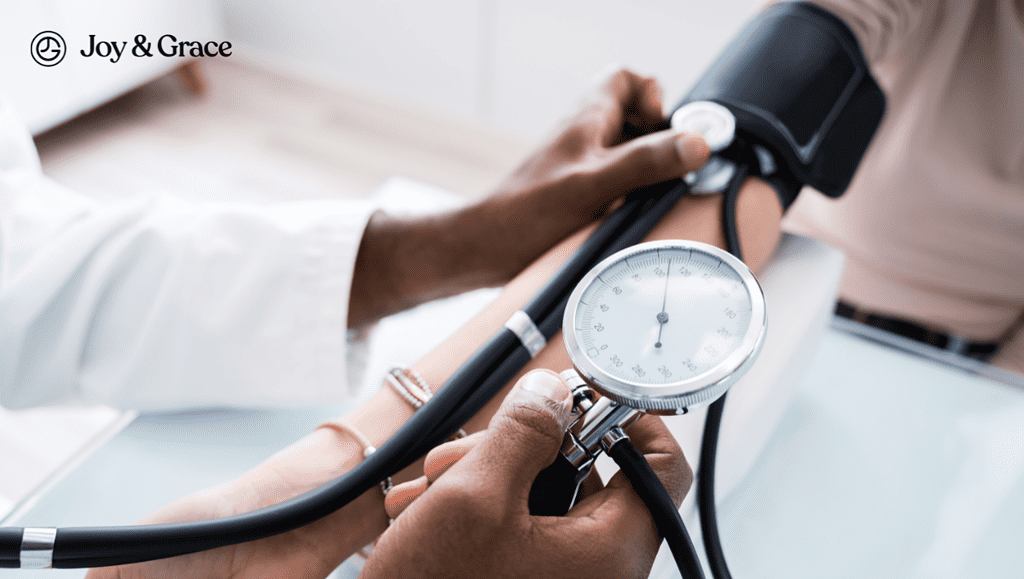
To avoid heart attack and heart disease, you might need to change your lifestyle. Taking care of your heart requires dedication and attention. Consult a medical professional. They will give you general advice and recommend you screen for heart disease.
Screening tests for heart attacks include the following:
- Measuring your blood pressure (BP). You can do this at home on a daily basis. All you need is a digital or manual blood pressure monitor.
- Measuring your cholesterol and other fat levels. Your doctor will suggest how often you need to do these tests based on your health and heart disease risk factors.
- Measuring BMI (Body Mass Index) and waist circumference. Maintaining a healthy BMI and waist circumference means you are fit and eating healthy.
- Checking your blood glucose level. The American Diabetes Association recommends testing for diabetes for all people over the age of 45. If tests are normal, you may repeat testing at 3-year intervals.
Here are some additional helpful tips for heart disease prevention:
- Eat a healthy, balanced diet.
- Try to exercise and be physically active.
- Pay attention to your weight.
- Give up smoking.
- Reduce alcohol consumption.
- Take your medications based on your doctor’s medical advice.
Takeaway
Shoulder pain (left or right) is a common problem worldwide. It can appear for different reasons.
Pain in the left shoulder and arm is common in heart diseases such as heart attack or pericarditis.
Heart-related left shoulder pain is referred pain from the chest. It is located at the top and front of the shoulder. It may feel like increased pressure or discomfort.
To understand if shoulder pain is heart-related, you must know the signs of heart disease. Some of the most common signs and symptoms of ischemic heart disease and heart attack include the following:
- Chest pain that spreads
- Shortness of breath
- Nausea and vomiting
- Sweating
- Dizziness
- Irregular heartbeat
- Severe fatigue
Not everyone may experience a heart attack or another heart disease the same way. Some heart attacks may be “silent,” i.e., they may happen without any symptoms.
Heart symptoms may appear differently in women and men. In women, the signs of heart disease are more subtle than in men. Chest pain is the most common complaint among both sexes.
If you suspect a heart attack, call 911. When you reach the emergency department, your doctor will:
- Perform an ECG,
- Order blood and imaging tests,
- Order other invasive and non-invasive tests.
Red flags for left shoulder pain include the following:
- Acute pain after trauma
- Systemic symptoms: fever, night sweats, weight loss, or respiratory problems
- Abnormal shape of the shoulder joint
- Mass or swelling in the shoulder area
- Tender, hot, and red joint
- Severe restriction of movement.
The best way to respond to left shoulder pain is to consult your healthcare provider as early as possible. Recognizing and treating heart disease early can prevent or limit damage to your heart, help your heart work better, and save your life.
Emergency treatment of heart attacks includes the following measures:
- Medications
- Oxygen therapy
- Invasive procedures
Heart disease can be prevented by making positive lifestyle changes and performing screening tests.
